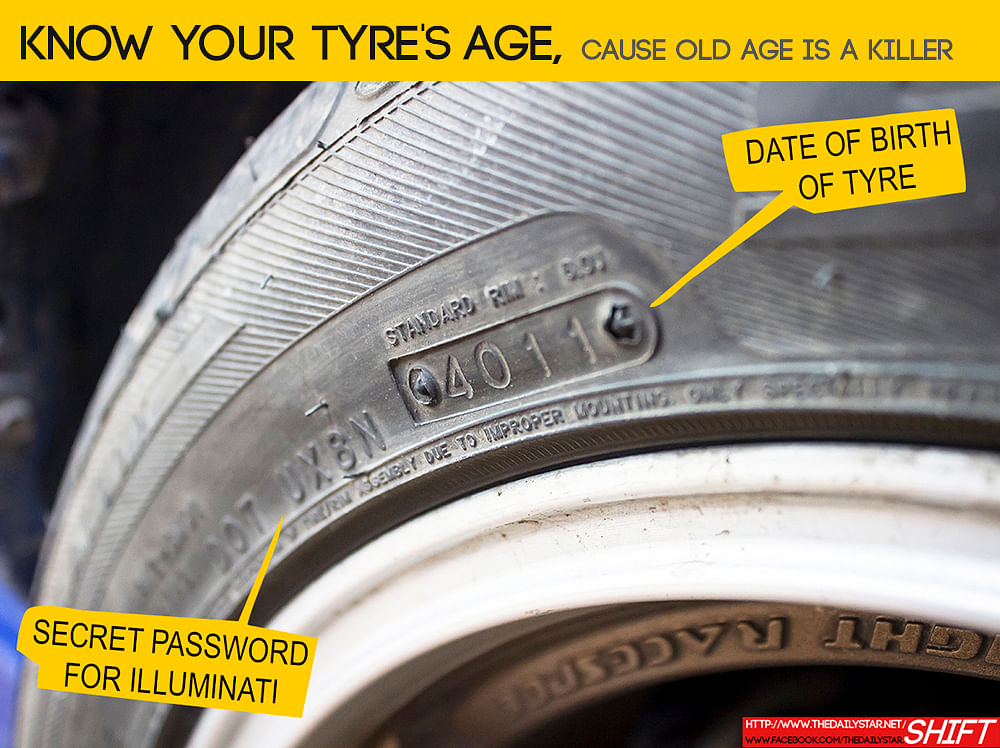How to avoid buying tyres too old

The older a tyre gets the less effective it is at gripping the road. There comes a time when rubber wants to change identities with plastic. Time for some slippery fun, no? Not when you slip and slide into a tree.
Tyres are made from rubber that starts to lose its soft grippy-ness due to chemical breakdown. The elasticity starts to go. Check out old, used tyres at a shop. They look slightly shiny like the worn smooth surfaces of an overused TV remote. Press with a nail and the rubber feels like 'not-rubber'.
But did you know that tyres stored indefinitely also break down? The rubber is made with anti-oxidation chemicals that sow down the ageing but it doesn't help if the tyres are not being used. Tyres are like chocolate; there's an expiration time but without the date imprinted. Rule of thumb is to use up rubber within 6-8 years. Higher performance rubber is more susceptible to ageing. Case in point, the late Paul Walker's last ride was in a Porsche Carrera GT that suffered from poor grip because of old, infrequently used tyres.
So when you go to buy new rubber for your car, how do you know you're not buying old, brittle stock? Look at the tyre sidewall and look for the letters DOT. There's a lot of numbers there that could give anti-math people a headache. But look for four digits closely packed together usually following DOT. The first two numbers represent the week it was made in. normally, a person would suggest month but tyre guys like to dabble with numbers. The last two digits refer to year. Referring to our pic: 4011 is the 40th week of 2011. And sometimes, the stamp isn't anywhere to be seen. Try looking on the other side.
Today's tip: Just like the bread you eat, get your tyres as fresh as possible.

 For all latest news, follow The Daily Star's Google News channel.
For all latest news, follow The Daily Star's Google News channel. 



Comments